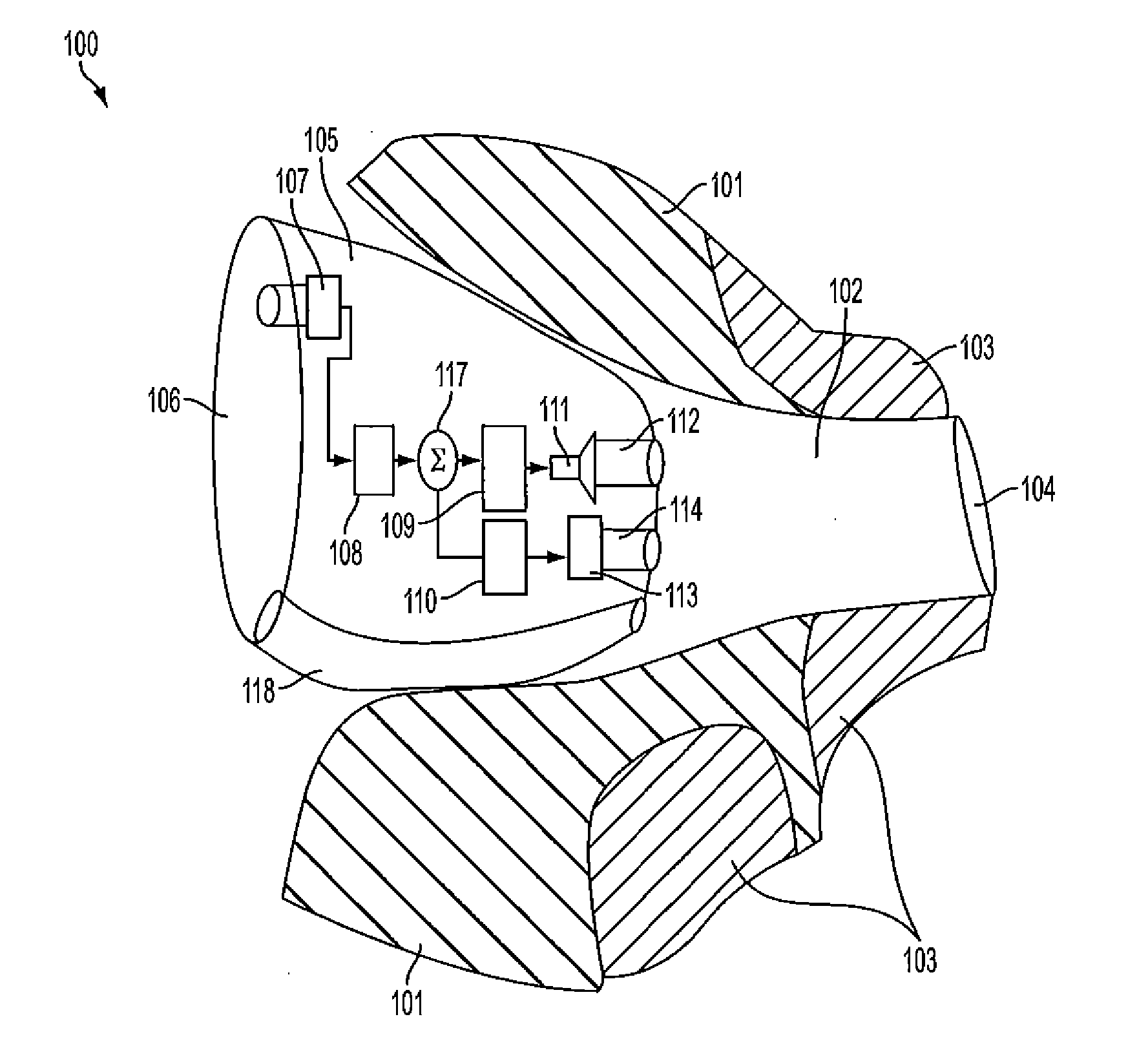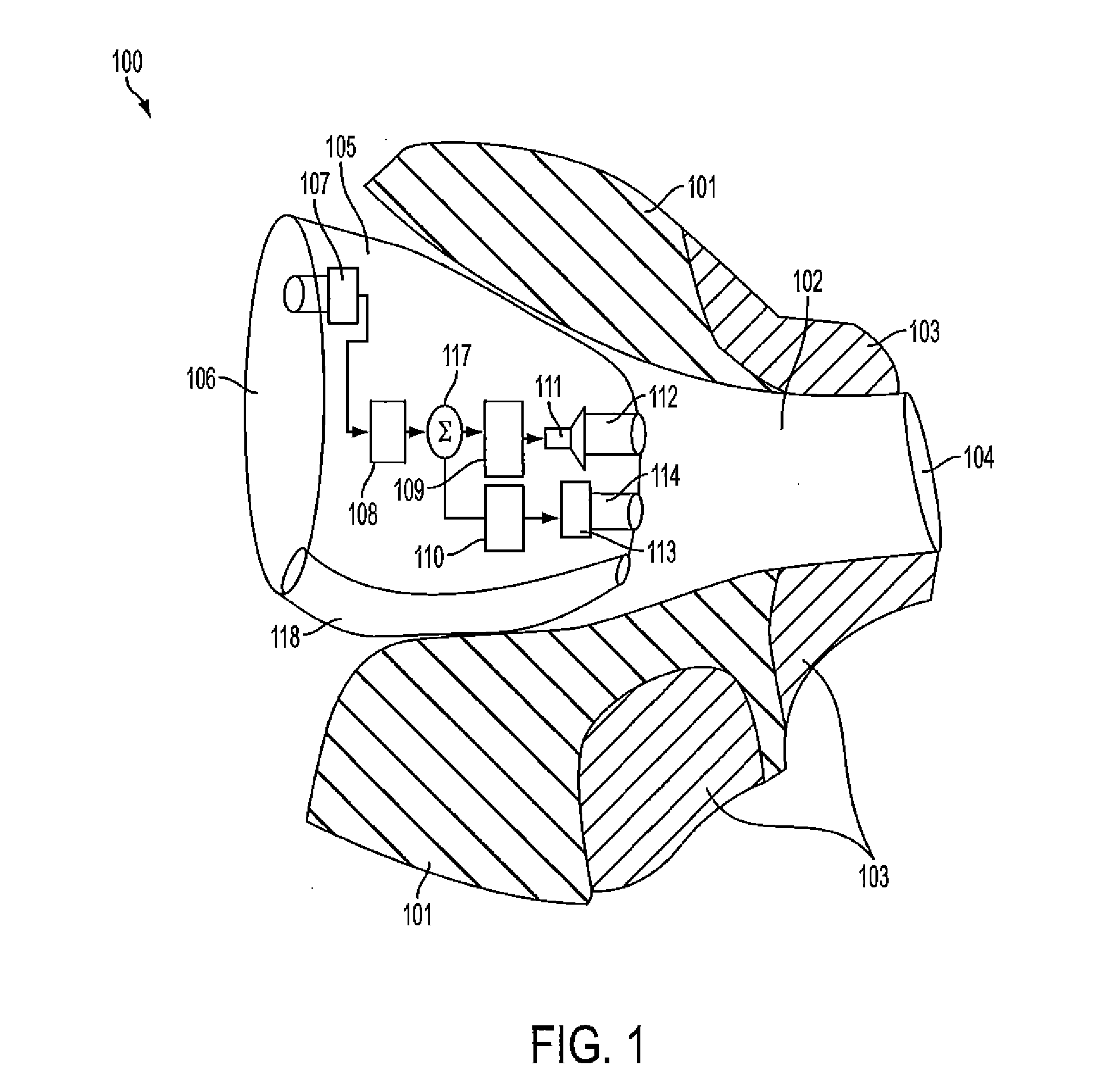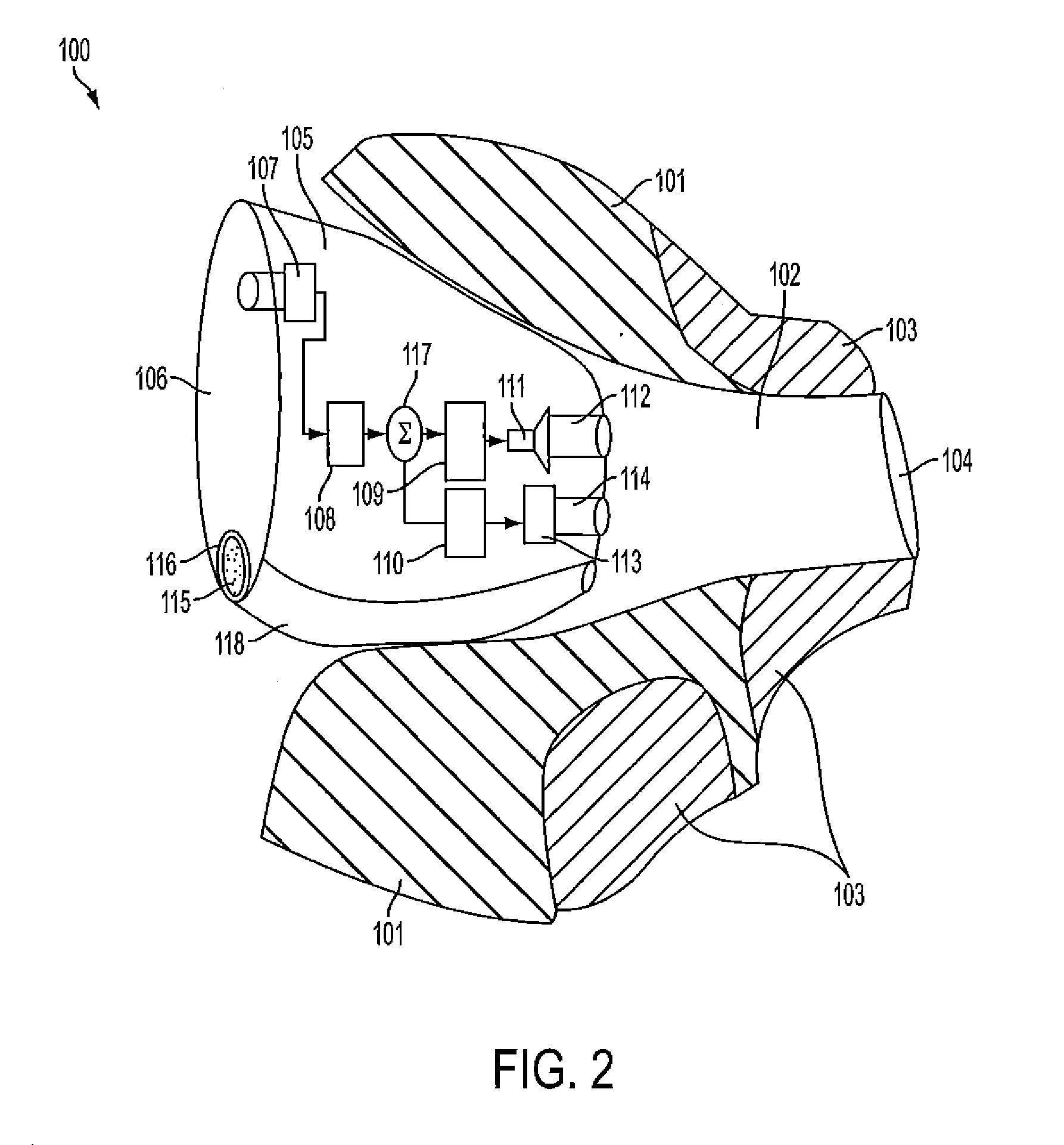Hearing aid with occlusion reduction
a technology of occlusion reduction and hearing aids, applied in the field of hearing aids, can solve the problems of poor sound quality of the user's voice as well as the other sounds reaching the eardrum, feedback instability, and the reduction of directionality of directional hearing instruments, and achieve the effect of minimizing distortions in frequency respons
- Summary
- Abstract
- Description
- Claims
- Application Information
AI Technical Summary
Benefits of technology
Problems solved by technology
Method used
Image
Examples
Embodiment Construction
[0018]FIG. 1 is a diagrammatic representation of a hearing aid 100 having active occlusion reduction (AOR) circuitry (such a hearing aid is described further in U.S. Patent Publication 2008 / 0063228 (“Mejia, et al.”) and the Meija et al article, both described above). The hearing aid 100 is shown inserted in the outside end of an ear canal 102 of a user that is surrounded by soft ear tissue 101 and bony tissue 103. An ear drum 104 is located at the inside end of the ear canal 102. The hearing aid 100 comprises a housing or shell 105 that defines a generally closed cavity therein in which are arranged the hearing aid components. The hearing aid 100 is typically configured to be snugly fit in a user's ear so that outside end of the aid 100 faces the outside surroundings; the middle portion of the aid 100 rests in and blocks the ear canal 102 along the soft ear tissue 101; and the inside end of the aid 100 faces the residual volume of the unblocked portion of the ear canal 102 defined b...
PUM
 Login to View More
Login to View More Abstract
Description
Claims
Application Information
 Login to View More
Login to View More - R&D
- Intellectual Property
- Life Sciences
- Materials
- Tech Scout
- Unparalleled Data Quality
- Higher Quality Content
- 60% Fewer Hallucinations
Browse by: Latest US Patents, China's latest patents, Technical Efficacy Thesaurus, Application Domain, Technology Topic, Popular Technical Reports.
© 2025 PatSnap. All rights reserved.Legal|Privacy policy|Modern Slavery Act Transparency Statement|Sitemap|About US| Contact US: help@patsnap.com



